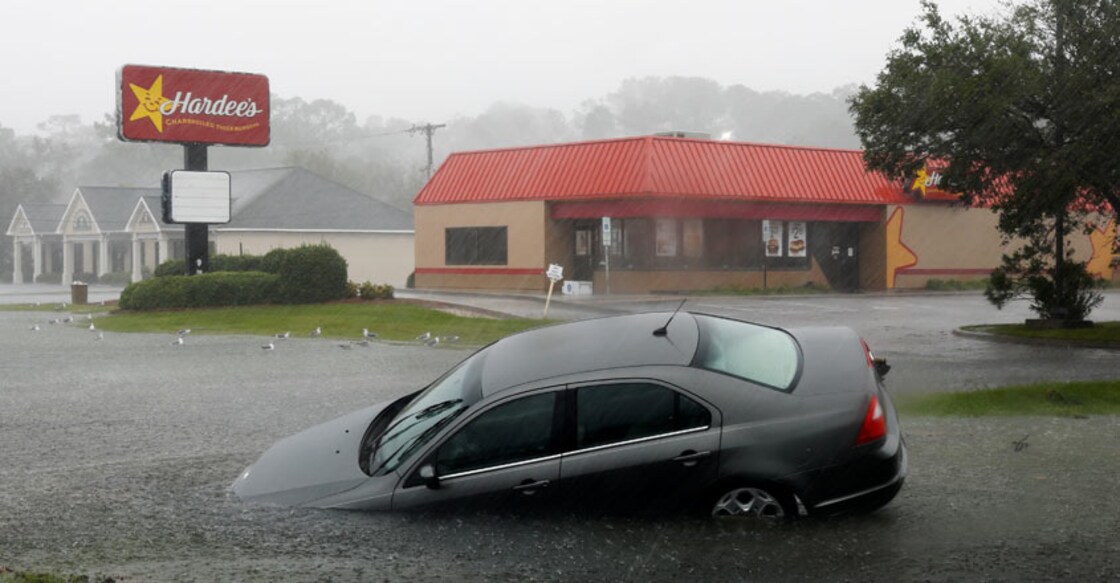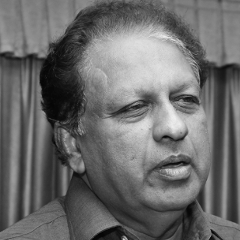Floods don't know any borders as Kerala and Carolinas proved

Mail This Article
“To escape rising rivers, nowhere to go but up” said a recent headline in the New York Times as it reported on Hurricane Florence in South Carolina, US, but it could have been the same in any newspaper in Kerala for at least a week last August. Even after having flown for 20 hours to reach New York, the scenes on local television in the US are the same I saw before I left the shores of Kerala. The fury of the water submerging the banks of rivers and bringing down homes, large and small, and helpless human beings going as high as they could to escape drowning are scenes still fresh in my mind only to be seen again. Men in boats knocking at doors of sunken homes asking “Anyone in there?”and helicopters hovering around to airlift men, women and children from the roof tops are all too familiar. The only difference is in the colour of the human beings affected, their language and the nature of the infrastructure being destroyed.
The US is a superpower and India is super poor, but natural calamities make no distinction between the rich and the poor. Hurricane Florence killed nearly 50 people and the Kerala floods nearly 500 because the latter was least equipped to manage the disaster. Moreover hurricanes come to coastal areas frequently and the drill for disaster management is clearly laid out in the US. Rescuers were not fishermen and volunteers in rickety boats, but trained personnel in uniform in modern speed boats.
The US scientists have no doubt that global warming caused by human activities is responsible for the fury of nature, but in Kerala the calamity was man-made not only because of reckless use of ecologically fragile areas, but also because of inept handling of the dams. But the politicians are the same everywhere in the way they turn even calamities to their political advantage.
President Trump, like Kerala Chief Minister Pinarayi Vijayan, consulted emergency officials, expressed concern for the victims and assured the public that the Government is ready for any emergency. The unpredictable President Trump has also been awarding himself high marks for handling the 2017 Hurricane Maria in Puerto Rico and accusing the media and the opposition for exaggerating the death toll “to make me look as bad as possible.” He has denied the general assessment that Maria took 3,000 lives and placed the figure of deaths at a ridiculous figure of less than 20. Not even the most totalitarian leader would have made such a claim to establish his infallibility. He has only exposed himself to ridicule once again. “Democrats don’t need to lift a little finger to make the President look bad. He is managing that all on his own,” said the New York Times.

The situation that unfolded in the media in the US with regard to Hurricane Florence was in contrast with the chaotic images that emerged on the television during the floods in Kerala. In addition to the floods and the landslides that had happened in Kerala, the severe storm that raged in two US states posed an additional hazard. The movement of the hurricane was predicted repeatedly and evacuation was enforced without any leeway for erratic behaviour. The television anchors themselves reported from rain-drenched areas without sitting in the comfort and security of their studios. The involvement of the authorities and credible media persons give comfort to the citizens even in extreme adversity. In the US those who refuse to move from danger zones are clearly told that they would stay at their own peril. America stands for freedom, but not freedom to commit suicide.
Unlike in Kerala, the state authorities have no issues with the Federal Government either about allocation of resources or about acceptance of foreign assistance. In the normal course, there is no ban on receiving overseas aid, but the matter of resources are in the hands of the Federal authorities. Perhaps, the model that the Indian Prime Minister Narendra Modi has in his mind is the American one. But a real Superpower is more confident than an aspiring one. The US had no qualms in receiving cash assistance from India and bottled water from France during Hurricane Katrina in 2015. It is not a matter of the country being unable to cope with the crisis, but its willingness to believe in international cooperation.
Florence was different from its predecessors as it was slow in its movement and it was causing more damage because it settled in a particular area for long. This is the first time in the US that a hurricane caused landslides, one of the reasons for many deaths in Kerala. But the tracing of the likely movement of the hurricane takes the surprise element of its fury. Stranded victims are spotted and they are rescued immediately and taken to well-organised and well-equipped relief camps. The kind of chaos we saw throughout the crisis in Kerala is not in sight there. The frequency of hurricanes, the experience gained over the years and the relative affluence of the victims ease the impact of natural disasters in countries like the US.
A disturbing report from South Carolina was that the authorities, while insisting that everyone in the projected path of the hurricane should be evacuated, chose to leave thousands of prisoners in high-security prisons. The reason given for a such an inhumane decision was the risk involved in transporting them in adverse situation. Authorities reasoned that many among them may escape and cause panic in the society. But the policy has been severely criticised by human rights activists. Many prisons are in the evacuated zones and if some drown in the floodwaters the government would be held guilty of cold-blooded murder. The prisoners reportedly braced themselves for the flood, which reached some of the prisons. Such a decision could not have been taken in Kerala. The prisoners in Kerala were involved in preparing food for the flood victims and nobody was discriminated against in the matter of evacuation.
By September 16, Florence was downgraded and it moved from South Carolina to North Carolina and dissipated by September 19. Much more rains were expected, but the worst seems to be over. There have been a few deaths, but the low casualty rate is on account of early predictions of the movement of the hurricane and the quick rescue operations. In the Carolinas, the victims and the rescuers won the race against time, while in Kerala people succumbed to it for want of appropriate warnings and inadequate preparedness. But the challenges of the floods are the same in the US as in India as floods have no borders.


